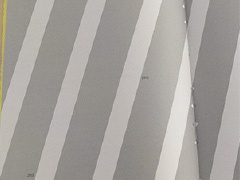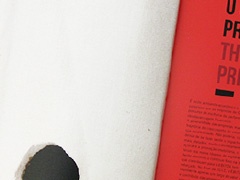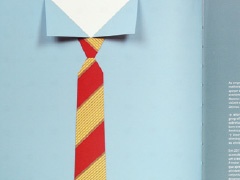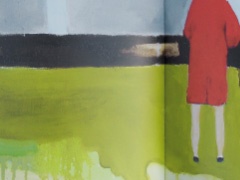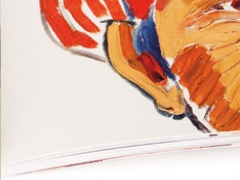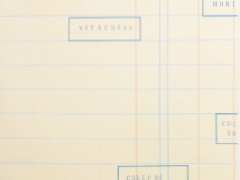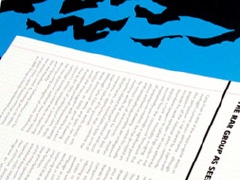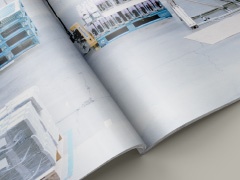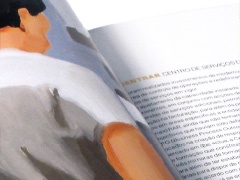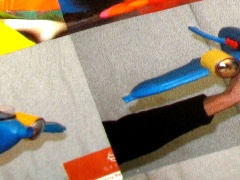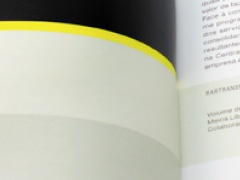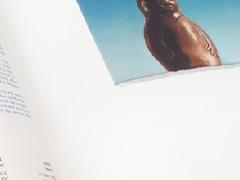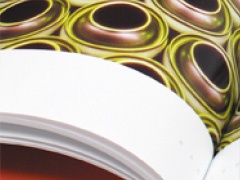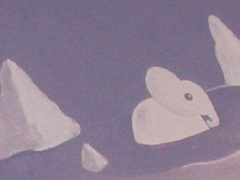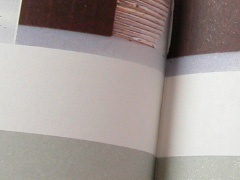The project
“RAR seen by...”
Since 1999, the RAR Group has opened the doors of its companies to the gaze of Portuguese artists invited to produce works conveying their vision of the RAR Group.
The RAR Group’s Annual Reports and Accounts feature the artists’ works, with graphic design by Atelier Nunes & Pã.
This is the basis of the “RAR seen by…” project, curated by Miguel von Hafe Pérez until 2010, and from then until 2014 by Marta Moreira de Almeida.
To celebrate 15 years of the “RAR seen by…” project, the 2014 Annual Report and Accounts revisits the works produced by all the guest artists, complemented by launch of a new website, as a means of illustrating the project’s evolution over time and to introduce people to a group of companies that was established over 50 years ago but that still feels "at ease in the contemporary world".
The “RAR seen by…” project isn't a mere illustration of an Annual Report. It is already a collection of autonomous works by key artists in the world of Portuguese contemporary art. Some of the works - photography, painting, sculpture, drawing, video - are on display in the Group’s companies, provoking, questioning and challenging viewers, and inciting them to see never-before-noticed details.
From the moment when we choose a specific artist, from those proposed by the curator, we don’t impose restrictions. Instead we subject ourselves to the artist’s individual gaze. We open ourselves up to the outside world, presenting not what we think we are, but how the artist sees us. The discovery of this new perspective starts with the first contacts with the guest artist who questions, points, draws, passes his or her fingers over the surfaces, and explores textures.
The project involves two distinct stages: the first, that of the works produced by the guest artists, and the second stage, involving the design by Atelier Nunes & Pã, which endows graphic expression to the works and inserts them in the RAR Group’s Annual Report and Accounts, which has garnered international recognition in two consecutive years, with the award of "RedDot Design Award" in 2009 and 2010.
The result?
The result is surprising, judging by the sense of curiosity, and sometimes amazement, of the recipients, when they see an Annual Report which contains much more than a mere chronicle of statistics.
Fifteen years,
fifteen artists.
When the project “RAR seen by...” was first launched, fifteen years ago, I don’t think anyone could have imagined the consistency and quality of the final results following the commissions, whether in terms of the respective Annual Reports and Accounts publications, or the works which have been specifically created for this project.
Let us recall how it all began: following an invitation from the designer João Nunes, I was asked to consider the possibility of inviting several Portuguese fine artists to visit the premises of the companies of the RAR Group and visually interpret what they saw and felt. Within the works produced in this context, some were used to intercalate the information contained in the Annual Reports and Accounts, thus endowing a unique character to each edition. From the beginning, an attempt was made to ensure that the RAR Group acquired a substantial part of the works produced by each artist, which means that today - after fifteen years and fifteen artists - we can start to talk about a significant Portuguese contemporary art collection.
The design work of the Atelier João Nunes, now known as Atelier Nunes & Pã, always demonstrated great care in the graphic production of these Annual Reports and Accounts, for which it received several international awards. As for the artists, the invitations correspond to a way of working that is very rare in Portugal - endowing complete creative freedom while guaranteeing subsequent purchase of the artwork.
This is thus the simplified form by which the project has been developed. As in any business activity, and in particular in the universe of cultural intervention, the keyword is continuity: how many resources are squandered in initiatives whose interruption presupposes difficult restarts? In many cases, this paradigm has hindered the full development of many sectors of our society: as governments change, boards of directors change, and key protagonists change there is an invariable temptation to start again from scratch and invent what often does not need to be reinvented ...
The pleasure of working with a stable environment is priceless. Ideas such as those which preside over the consolidation of a qualified project don’t need to be reformulated if their logic makes it possible to attain significant end results. Because in this case the variable is a certainty: each artist carries his own creative ballast with him and his interpretation of this business universe will always be different (and, in parallel, each year the graphic design also reinvents itself).
The fifteen artists who took part in this project are important figures in the context of contemporary Portuguese art. Thus, in addition to the intrinsic value of owning the works signed by them, we have the added value of their specific creations. Spanning the most diverse disciplines - ranging from painting to sculpture, from drawing to installation, photography to video, even including sound interventions - the overall perspective is one of qualified diversity.
It is nonetheless curious to admire how different artists react to that which is shown to them. While some are more impressed by the technological apparatus, by the beauty that may be contained in certain machines and devices, others place greater emphasis on the human presence, portraying movements, gazes or mere presences in a given environment.
This is not, of course, an apologetic commission, but it is also clear that the soul of a company is rooted in these small, routine and discreet gestures of a specific worker, or in the grandeur of certain industrial or agricultural sites, for example.
This intangible heritage represents a dimension of the history of companies which is barely visible to the general public and is documented here without any pretensions of realism. Each artist subjectively filters that which he sees and shows us a partial reality that helps us reorganize our own apprehension of reality. Micro stories within history. Micro stories that now form part of this heritage.
Miguel von Hafe Pérez
- Carlos Lobo (2013)
- Francisco Queirós (2012)
- João Marçal (2011)
- Maria Condado (2010)
- Francisco Vidal (2009)
- Mafalda Santos (2008)
- Carla Filipe (2007)
- André Cepeda (2006)
- Carlos Correia (2005)
- João Pedro Vale (2004)
- Filipa César (2003)
- Arlindo Silva (2002)
- Nuno Cera (2001)
- Baltazar Torres (2000)
- José Maçãs de Carvalho (1999)



